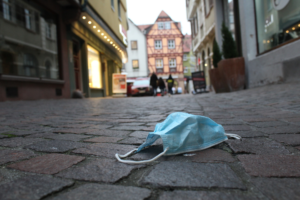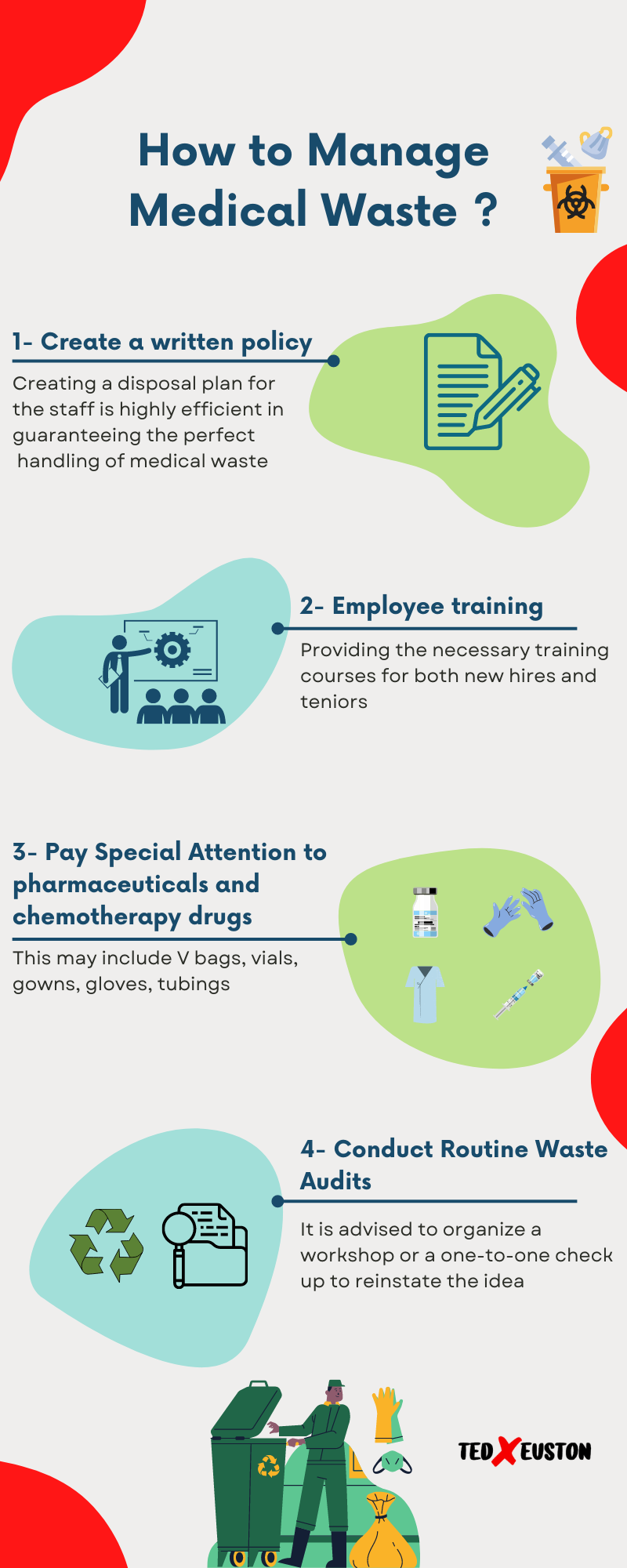This article is for informational purposes only and is not meant to offer medical advice.
What Is Medical Waste?
In the health industry, stockpiles of health supplies have been created by medical waste in our day to day lives. Medical waste is thus the outgrowth of disposable trash from health care. We may list few examples as follows :
– Medical needles and syringes.
– Biodegradable products such as masks
– Dressings; elastoplast
– Human body parts
– Samples from blood tests
– Contaminated medical devices etc.
Types of Medical Waste
Infectious or Biohazardous Waste:
This type of medical waste is the detritus polluted by implements that could infect humans. It encopases the following ;
– Fabric/textile tinted with blood or other bodily fluids
– Laboratory medical waste – by far one of the biggest high risks in escalating infectious diseases.
– Disposable trash leftovers from people with infections; swabs, dressings, medical waste disposables.
To illustrate this, we can state the example of Covid-19 Labs that treat medical waste such as test kit components and classify them as biohazardous. If these patient specimen samples aren’t disposed of immediately, any contact may cause the further spread of the disease.
Sharpe Waste:
It constitutes one of the biggest high injury risks to people. It is derived from medical devices with sharp edges including needles, syringes, blades, and scalpel. Although not big in size, the consequences are hazardous once the sharp point of these equipment accidentally sticks to human skin. The infection is instant. Therefore, getting rid of these types of medical waste shouldn’t be in trash cans or recycling bins like we do for cell phones. Rather, after any use of these gadgets, use a disposal container to throw it in. Please make sure the container is :
– Made of heavy duty plastic
– Can be secured with a tight fit lid
– Stable and upright
– Leak-resistant and has a warning that it contains infectious waste.
Once you put your personal medical waste in the containers, please make sure to keep it far away from children. Do not let any overflow of hazardous substances in the container; make sure it is about three-fourth full. For a more professional scrapping, contact your local health department for guidelines on how to effectively and securely dispose of it.
Pathological Waste:
Incorporates human tissues, organs and other bodily fluids etc. Another example would be infected animal carcasses.
Chemical Waste:
Includes but not limited to : byproducts generated from laboratory experiments, spent solvents – including water based, any supplies contaminated by hazardous chemicals, used oils, unused and surplus reagent grade chemicals etc.
Cytotoxic Waste:
Also known as antineoplastics and this type of medical waste depicts a group of medicines that contain toxic chemicals that target cells causing their withering. They are used to treat cancer as they prevent the fast overgrowth of human cells. Despite the positive side, they contain certain substances that can be hazardous to our health.
Radioactive Waste:
We may also call it nuclear waste, a byproduct from nuclear reactors, fuel processing plants, and research facilities. In addition, waste like contaminated equipment and syringes that comes from radiation and PET scans.
Non Hazardous or General Medical Waste:
generally, this type is nearly risk free and doesn’t pose any biological , radioactive or physical risks to your health. It includes the following; paper/plastic trash, gloves and gowns, packaging, containers, and wrappers, adhesives like binsages which aren’t stained with blood or other infectious luides.
Where Does Medical Waste Come From ?
First and foremost, it begins from you, at home. This might happen for instance when you throw a disposable Mark, take a rapid Covid-19 test, use medical utensils or flush unused medication.
Health care waste by and large comes from different sources which are the following: hospitals and other medical asylums/facilities, laboratory and research centers, autopsy, blood banks and collection services, nursing homes…
Although hospitals usually burn the hazardous medical waste, the Environmental Protection Agency has set stricter policies to protect from air pollution in the 1990s. A dichotomy that requires the search for other environmentally friendly methods to get rid of all medical waste. Alternative means may rely on microwave technology, steam sterilization or chemical mechanical systems to transform medical waste germfree.
How to Manage Medical Waste ?:
As aforementioned, different medical facilities/centers produce a variety of medical waste, hence, the method in disposing of these hazardous byproducts can vary. This section will provide the numerous methods that medical centers can rely on to ensure more eco-friendly and environment safe procedures. This list will your guide for an effective medical waste management:
Create a written policy :
Creating a disposal plan for the staff is highly efficient in guaranteeing the perfect handling of medical waste. This way, we can avoid needles confusion that emerges from having separate waste. To illustrate this point, general non infectious waste like meal packaging shouldn’t be thrown in the same place as contaminated waste like syringes and bandages. An organization’s written policy accessible to all employees should be clear and straight to the point to guide staff in taking the proper measures and regulate medical waste.
Employee training:
A written policy alone is not sufficient, but an active reminder to the employees everyday is. By investing time and energy in providing the necessary training courses for both new hires and teniors, the idea gets engrained better. Additionally, this assists employees in better understanding the company’s terms and conditions and recapitulates the importance of the waste management situation.
Pay Special Attention to pharmaceuticals and chemotherapy drugs:
These types of waste are toxic and hence require the interference of a licensed medical waste transporter to dispose of them in a professional way. this may include V bags, vials, gowns, gloves, tubings, etc.
Conduct Routine Waste Audits:
Providing the company with policies and conditions to be followed and respected is not enough if there aren’t any periodic check-ups done. generate a spot verification on your medical waste disposal procedures in order to ensure the proper compliance of employees. If certain procedures haven’t been followed, it is advised to organize a workshop or a one-to-one check up to reinstate the idea behind these procedures and to remind them of their importance.
That’s all .But before sharing your thoughts in the comment section on our article, Please check this useful video:
How covid is Creating Medical Waste?

The Coronavirus pandemic not only wasted millions of human lives but also caused a boatload of covid medical waste from used test kits, syringes, disposal masks, and other personal hygiene belongings. The World health Organization (WHO) stated that the abrupt amount of medical waste can put people’s lives at higher risk to get contaminated despite social distancing. WHO authors recommend using more climate friendly waste practices such as relying on organic packaging, wearing reusable hygienic equipment and investing in non-polluting techniques to get rid of medical waste.
This article is for informational purposes only and is not meant to offer medical advice.

A Content Writer & Freelance Translator. He enjoys writing about mental health, fun for seniors, educational apps, and entertainment for all. In his spare time, he enjoys watching football, playing video Games, and good laugh with his friends.









